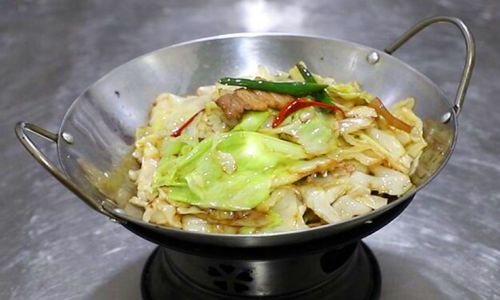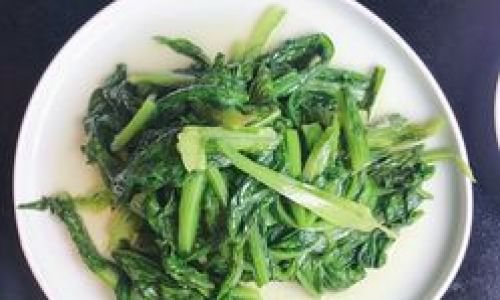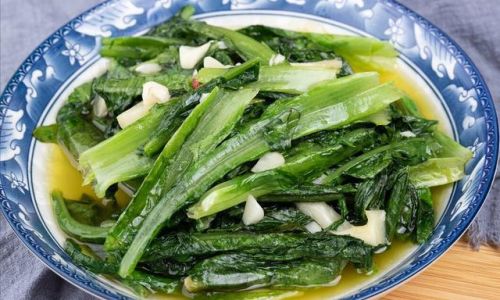Cabbage dry pot, a beloved dish in Chinese cuisine, is a symphony of textures and flavors that tantalizes the taste buds with its crispy edges, tender core, and aromatic spices. This versatile dish, often referred to as “gan guo cai” in Mandarin, transforms humble cabbage into a star ingredient through a meticulous cooking process that balances heat, seasoning, and technique. Whether you’re a seasoned home cook or a curious novice, mastering the art of cabbage dry pot opens doors to a world of culinary creativity. In this comprehensive guide, we’ll explore every facet of crafting this dish, from selecting the finest ingredients to executing flawless cooking methods.
The Essence of Cabbage Dry Pot
At its heart, cabbage dry pot is a stir-fried dish cooked in a wok or skillet without excessive liquid, allowing the ingredients to caramelize and meld into a harmonious blend. Unlike soups or stews, the “dry pot” technique emphasizes high heat and minimal moisture, resulting in a dish that’s simultaneously tender and crispy, with a depth of flavor that lingers. The beauty of this recipe lies in its adaptability—it can be tailored to suit vegetarian, vegan, or meat-loving palates, making it a crowd-pleaser for any occasion.
Selecting the Perfect Cabbage
The foundation of a great cabbage dry pot begins with choosing the right cabbage. While green cabbage is the most common variety, Napa cabbage (also known as Chinese cabbage) offers a delicate sweetness and tender texture that complements the dish’s cooking method. When selecting cabbage, look for firm, heavy heads with crisp leaves free from blemishes or wilting. The outer leaves should be vibrant in color, ranging from deep green to pale yellow, depending on the variety.

Key Tips for Cabbage Selection:
- Freshness Matters: Avoid cabbage with limp leaves or a strong, pungent odor, which may indicate spoilage.
- Size Considerations: Smaller cabbages tend to be sweeter and more tender, while larger heads may have a thicker, fibrous core.
- Storage: Store cabbage in the refrigerator’s crisper drawer, wrapped in a damp paper towel, to maintain freshness for up to two weeks.
Prepping Your Ingredients: A Symphony of Flavors
Cabbage dry pot thrives on contrasting flavors and textures. To achieve balance, gather a medley of aromatics, proteins, and vegetables that will elevate the dish’s complexity.
Essential Ingredients:
- Cabbage (1 medium head): Core removed and sliced into bite-sized pieces.
- Aromatics: Garlic (4 cloves, minced), ginger (1-inch piece, grated), and dried red chilies (optional, for heat).
- Protein (Optional): Thinly sliced pork belly, ground pork, or firm tofu for a vegetarian twist.
- Vegetables: Carrots (julienned), bell peppers (thinly sliced), and scallions (chopped, for garnish).
- Seasonings: Soy sauce, oyster sauce, rice vinegar, sesame oil, sugar, and white pepper.
- Cooking Oil: Neutral oil (e.g., vegetable or canola) for stir-frying.
Pro Tip: For an extra layer of umami, soak dried shiitake mushrooms in hot water until softened, then slice and add to the mix.
Mastering the Cut: Precision in Preparation
The way you cut your ingredients can make or break the dish. Uniformity ensures even cooking, while varying shapes add visual appeal and textural contrast.
Cabbage Preparation:
- Remove the core by slicing the cabbage head in half vertically, then cutting out the tough stem.
- Slice the cabbage into 1-inch wide strips, separating the leaves and stems if desired (stems may require slightly longer cooking).
Protein Preparation:
- If using pork belly, slice it into thin, bite-sized pieces. For tofu, press to remove excess moisture, then cube.
Vegetable Preparation:
- Julienne carrots into matchsticks for a crisp texture.
- Slice bell peppers into thin strips to ensure they cook quickly.
The Cooking Process: Fire and Finesse
Cabbage dry pot is a dance of high heat and precise timing. The goal is to sear the ingredients, locking in flavors while achieving a slight char without burning.
Step 1: Preheat the Wok

- Heat a large wok or skillet over high heat until it begins to smoke. Add 2 tablespoons of oil and swirl to coat the pan.
Step 2: Sear the Protein (If Using)
- Add pork belly or tofu to the hot wok. Cook until golden and crispy, stirring occasionally. Remove and set aside.
Step 3: Sauté Aromatics
- Reduce heat to medium, then add garlic, ginger, and dried chilies. Stir-fry for 30 seconds until fragrant.
Step 4: Crisp the Cabbage
- Increase heat to high and add cabbage. Stir-fry for 3–4 minutes, allowing the edges to caramelize. Toss continuously to prevent burning.
Step 5: Add Vegetables and Protein
- Toss in carrots and bell peppers, stir-frying for 2 minutes. Return the protein to the wok.
Step 6: Season to Perfection
- Drizzle soy sauce, oyster sauce, and rice vinegar over the ingredients. Sprinkle with sugar and white pepper. Toss vigorously to coat.
Step 7: Finish with Flair
- Drizzle sesame oil and toss once more. Remove from heat and garnish with scallions.
Achieving the Ideal Texture: Crispy Yet Tender
The hallmark of a great cabbage dry pot is its texture—crispy edges with a tender heart. To avoid sogginess:
- Avoid Overcrowding: Cook in batches if necessary to prevent steam from accumulating.
- High Heat is Key: Maintain a searing hot wok to evaporate moisture quickly.
- Timing is Everything: Remove the cabbage from heat while it still retains a slight crunch.
Seasoning Mastery: Balancing Act
The seasoning blend should enhance, not overpower, the cabbage’s natural sweetness.
- Soy Sauce: Provides saltiness and umami.
- Oyster Sauce: Adds depth and a hint of sweetness.
- Rice Vinegar: Brightens the dish with acidity.
- Sesame Oil: Imparts a nutty aroma.
Adjust to Taste: Start with the recommended measurements, then tweak as needed. Add a pinch of sugar to balance bitterness or a splash of chili oil for heat.
Vegetarian and Vegan Variations
For plant-based versions, substitute pork with crispy tofu or tempeh. Use tamari instead of soy sauce for a gluten-free option. Enhance umami with a splash of mushroom-flavored seasoning or nutritional yeast.

Troubleshooting Common Pitfalls
-
Soggy Cabbage:
- Cause: Overcrowding the pan or low heat.
- Fix: Cook in batches and ensure the wok is smoking hot before adding ingredients.
-
Bland Flavor:
- Cause: Insufficient seasoning or under-searing.
- Fix: Increase aromatics and seasonings, and ensure the cabbage caramelizes properly.
-
Burnt Ingredients:
- Cause: High heat without stirring.
- Fix: Toss continuously and reduce heat if browning too quickly.
Serving Suggestions: Beyond the Bowl
Cabbage dry pot shines as a standalone meal or a side dish. Pair it with:
- Steamed Rice: To soak up the flavorful juices.
- Noodles: Toss with udon or rice noodles for a heartier meal.
- Lettuce Wraps: Spoon the mixture into lettuce cups for a low-carb option.
Leftovers: Store in an airtight container for up to three days. Reheat in a wok to revive crispiness.
The Cultural Tapestry of Dry Pot Cooking
Dry pot dishes, or “gan guo,” originated in China’s Sichuan province, where fiery spices and numbing peppercorns dominate. Over time, the technique evolved to embrace regional ingredients and preferences. Today, cabbage dry pot is a testament to this culinary adaptability—a dish that honors tradition while inviting innovation.
Elevating the Dish: Creative Twists
- Spicy Sichuan Style: Add Sichuan peppercorns and doubanjiang (fermented chili paste).
- Korean-Inspired: Finish with gochujang and a sprinkle of toasted sesame seeds.
- Mediterranean Fusion: Toss in olives, sun-dried tomatoes, and feta cheese.
Conclusion: The Joy of Cabbage Reimagined
Cabbage dry pot is more than a recipe—it’s a celebration of simplicity elevated by technique. By mastering the interplay of heat, seasoning, and texture, you transform a humble vegetable into a dish that delights the senses. Whether you’re cooking for a weeknight dinner or a festive gathering, this recipe invites you to explore, experiment, and savor the art of Chinese home cooking. So grab your wok, ignite the flame, and let the sizzle of cabbage dry pot fill your kitchen with warmth and flavor.





0 comments